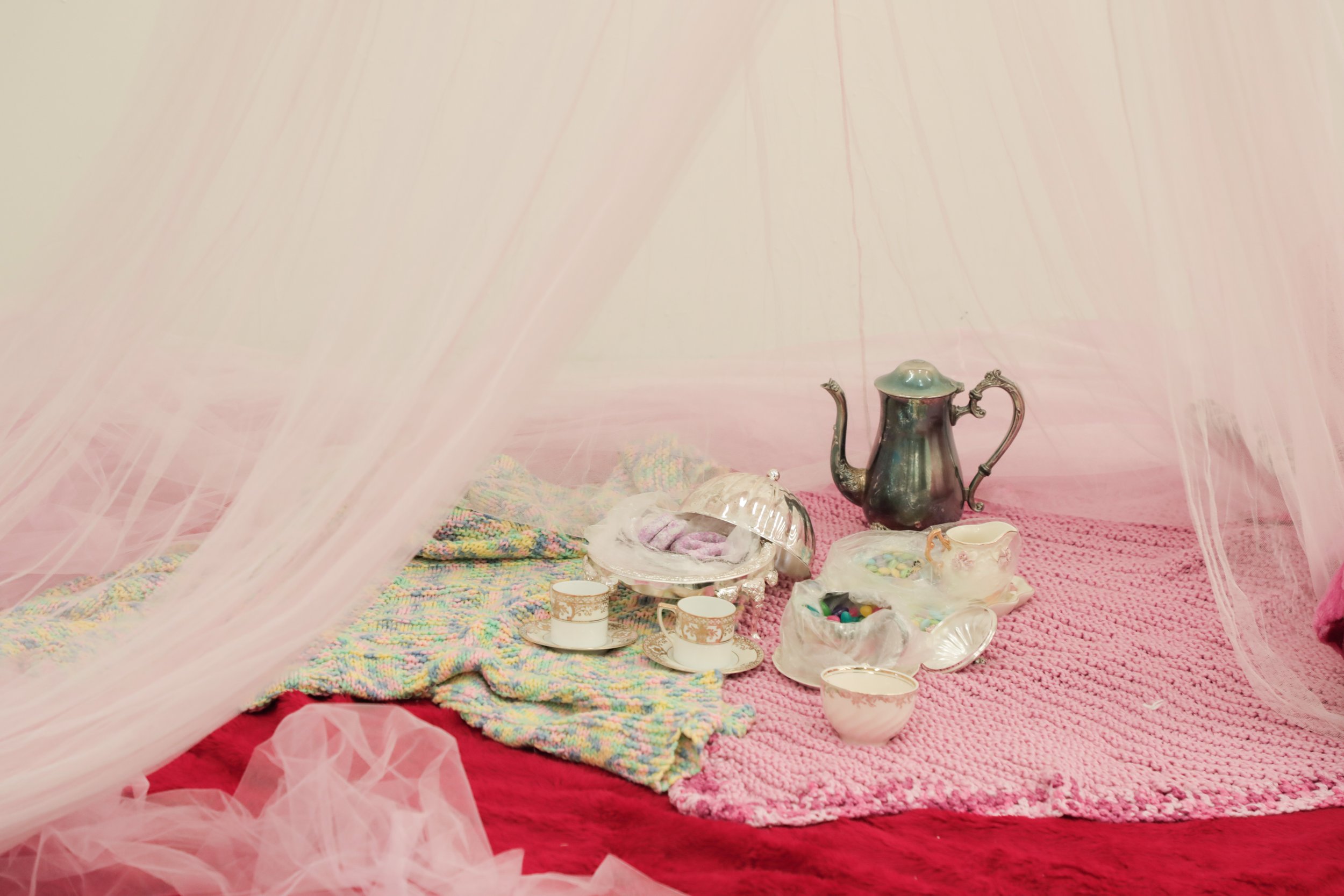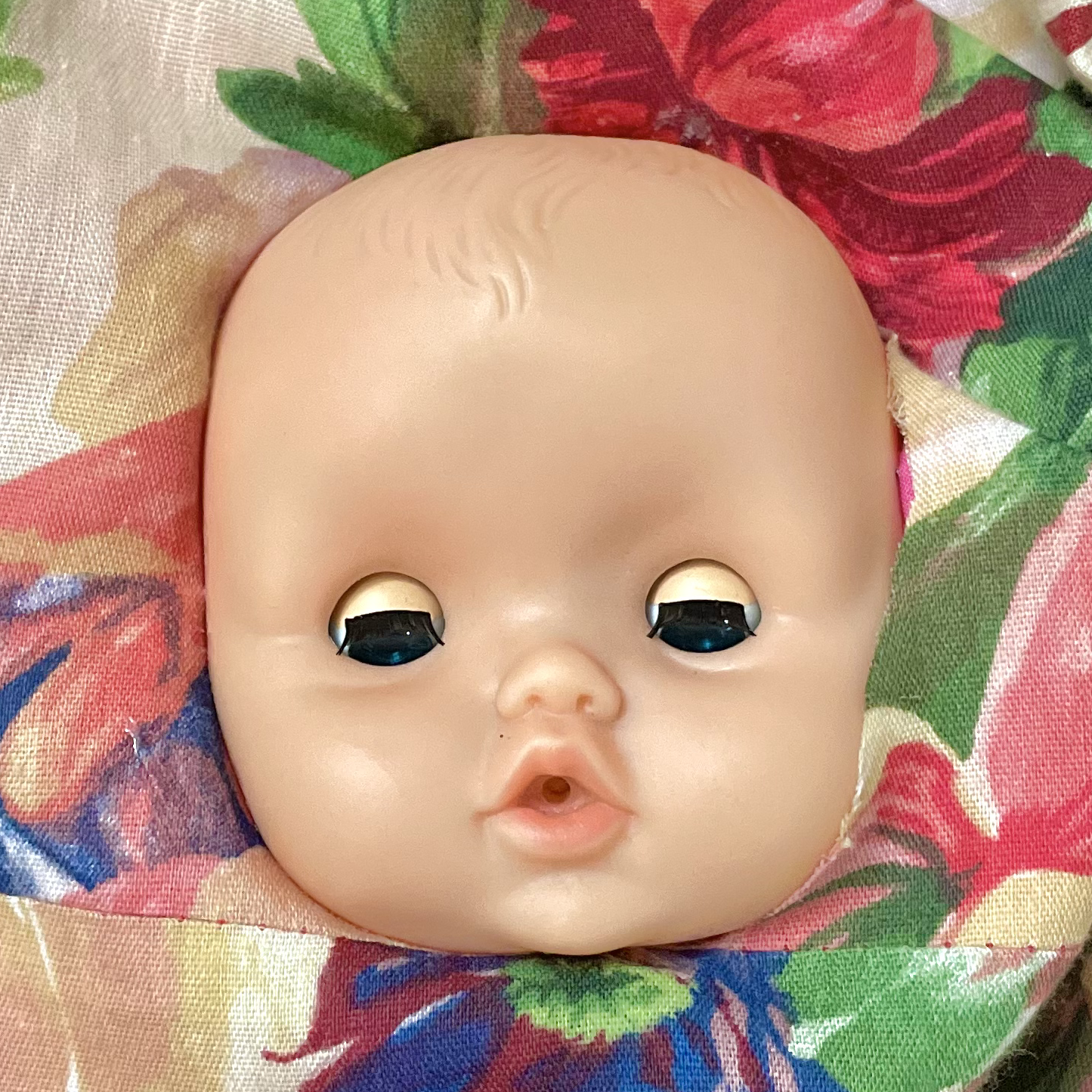



PLUSH PARTY FOR A GARDEN OF RABBITS
PLUSH PARTY FOR A GARDEN OF RABBITS
2023
blankets, porcelain, metal, candy
243 x 152 x 259cm
Cuteness is an ideology that aestheticizes fragility, vulnerability, powerlessness and innocence, able to become a proxy that intensifies intimacy. The affect that is derived from a cute object’s aspect (ie. “cuteness”) evokes the desire for tenderness, loving, or aggression. Cuteness—and by extension, concepts such as the Japanese “kawaii”—is a fetishism of the perceived difference in power dynamics that occurs between the subject and object, which depends on its softness and pliability as a way to engage participation. Cuteness and the “kawaii” are not only categories, but also sensibilities that changed aesthetic experience, only made possible through the current conditions of capitalism, labour, and consumption. The cute and kawaii are branded to be understood as a specifically feminized (and infantilized) aesthetic and therefore carry assumptions of superficiality, triviality, and frivolousness because of their proximity to commodity culture, the hyperfeminine, and the infantile. Yet these gendered and embodied aspects of the cute simultaneously anthropomorphize objects that are rooted in commodity culture into objects that become alive. In the face of cuteness, the object is able to revert the subject into the spatiotemporal fantasy of childhood, where, in the many manifestations of cute, the child—both bodily and mentally—becomes the infrastructure for its psychological, emotional and physical activation. plush party for a garden of rabbits uses this framework of cuteness in combination with the “transitional object”, a term coined by Dr. Donald Woods Winnicott to describe an object used to provide psychological comfort. The child depends on this object to deploy various coping mechanisms, among which are, as he explains in Playing and Reality, “[r]emembering, reliving, fantasying, [and] dreaming the integrating of past, present, and future”. Cuteness, as mediated through the child, is both nostalgic and able to move backwards or forwards, existing both in and out of time completely. Through combining “the cute” and the transitional object, this work invites the viewer to participate in “tea time” as a means to explore desire, closeness, and care. In this way, cuteness and the kawaii are able to account for what is seen as weakness, and instead mobilize them into a politics of care that accommodates vulnerability, dependency, and emotional liability. Thus, softness, tenderness, and care are able to become catalysts for affective bonding. This draws from some aspects of Relational art, where the works are activated by or contingent on the relationship between subjects rather than only the objects/things that create the framework. Since these works hinge on interactivity, the social dynamic/effect becomes the point of focus rather than solely the objectness (or “objects of contemplation”).
plush party for a garden of rabbits transforms blankets (which were thrifted, used, and/or pre-owned) into rabbit-shaped hats, inhabiting the fantasy of a time and place that recall the comforts of childish playtime. The textiles used are made of fleece, tulle and faux furs, and the use of wearable art also emphasizes notions of “dress-up” or roleplay. Porcelain and metal tableware contain various sugar confections.

